Top Liver Support Foods for Better Health

Written by
Stella Nilsson
Reviewed by
Prof. Benjamin Murphy, Ph.D.Eat liver-friendly foods such as coffee, berries, and cruciferous vegetables every day.
When preparing foods, consider steaming or baking instead of frying to preserve detox supporting nutrients.
Aim for fatty fish high in omega-3s at least 2-3 times per week to reduce liver inflammation.
Use olive oil for low heat cooking to limit bad fat accumulation.
Avoid sugar-sweetened beverages and processed meats that contribute to fatty liver disease.
Implementing dietary changes to support your liver can be helpful in conjunction with exercise and hydration for maximum liver reparation.
Article Navigation
Your liver functions as a filtering system, a daily cleansing of your body. The liver-supportive foods you choose will help it to do its necessary work. If it is not well supplied with food, you will find that it is sluggish in eliminating harmful substances.
The health of your liver is influenced by what foods you eat. Research indicates that most strain on your liver comes from food choices. Processed foods and sugars clog your system, while natural, whole foods provide the necessary nourishment that your liver needs to function well.
Learn how to improve liver efficiency with five superfoods. Antioxidant-rich berries, omega-3 fatty acids, fish, cruciferous vegetables, garlic, and coffee work together to eliminate toxins. The food components will help you maintain your health through superior liver function.
Cooking Methods Matter
How you prepare liver support foods determines how nutritional they are. Steamed broccoli has 90% of its sulforaphane (a detoxifying compound) preserved. Boiled broccoli has 60%. Prepare vegetables gently to maintain their protective properties for your liver.
Cooking at high temperatures can create harmful substances, such as acrylamides. When starchy food is cooked in oil by frying or grilling at a temperature greater than 350°F (175°C), these toxins can be produced. Acrylamides put additional stress on our liver through more harmful inflammation and oxidative stress. Cooking food more gently will be beneficial to our health.
Cook with olive oil over indirect low heat below 375°F (190°C), as its healthy fats begin to decompose above that and lose all their benefits. Gentle cooking preserves the anti-inflammatory properties of olive oil while preventing degradation into harmful byproducts that can strain the liver.
Baking, roasting, and steaming are the safest options for you since they do not destroy nutrients or create toxins. These methods allow your body to absorb the most goodness from every meal while also not interfering with the natural cleansing process of the liver.
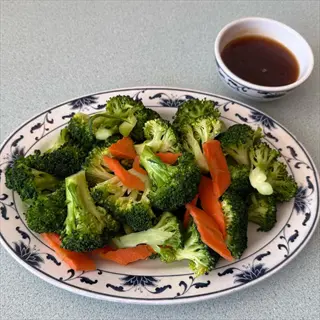
Steamed Broccoli
- Fact: Steaming preserves sulforaphane content better than boiling, retaining liver-protecting compounds
- Tip: Cook for 5-7 minutes until bright green to maintain nutritional benefits and texture
- Tip: Pair with olive oil and garlic to enhance flavor and nutrient absorption

Baked Salmon
- Fact: Baking at 375°F (190°C) preserves omega-3 fatty acids that reduce liver inflammation
- Tip: Cooking time is 12-15 minutes per inch of thickness for optimal texture
- Tip: Season with herbs like dill instead of salt to support blood pressure health

Sautéed Garlic
- Fact: Light sautéing in olive oil activates allicin, a compound that boosts detox enzymes
- Tip: Cook for 1-2 minutes over medium heat until golden but not browned
- Tip: Add to vegetables or lean proteins during the last minute of cooking
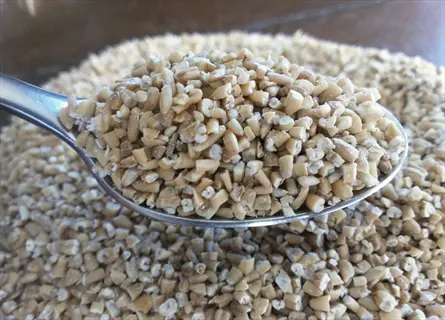
Steel-Cut Oats
- Fact: Simmering oats slowly preserves beta-glucan fiber that lowers liver inflammation
- Tip: Cooking ratio is 1 part oats to 3 parts water for 20-30 minutes
- Tip: Top with blueberries and walnuts for added antioxidants and healthy fats

Blended Berries
- Fact: Blending fresh berries releases anthocyanins without heat degradation
- Tip: Combine with Greek yogurt for protein that aids liver cell repair
- Tip: Use within 20 minutes of preparation to maximize antioxidant availability

Raw Spinach Salad
- Fact: Serving raw preserves glutathione precursors that support liver detoxification
- Tip: Combine with lemon juice dressing to boost iron absorption from greens
- Tip: Include sliced almonds for vitamin E that protects liver cell membranes
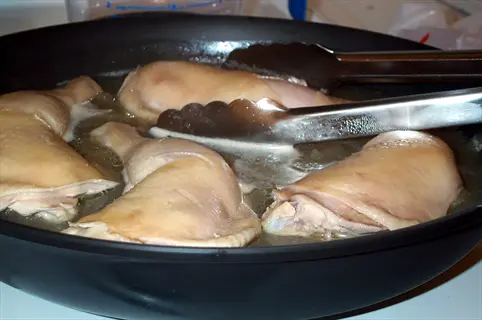
Poached Chicken
- Fact: Poaching at 160-180°F (71-82°C) keeps lean protein intact without added fats
- Tip: Cook for 15-20 minutes in broth instead of water for enhanced flavor
- Tip: Shred for salads to create liver-friendly meals without processed ingredients

Roasted Sweet Potatoes
- Fact: Roasting at 400°F (204°C) caramelizes natural sugars without burning toxins
- Tip: Cut into uniform cubes and roast for 25-30 minutes until tender
- Tip: Toss with rosemary instead of sugar for anti-inflammatory benefits
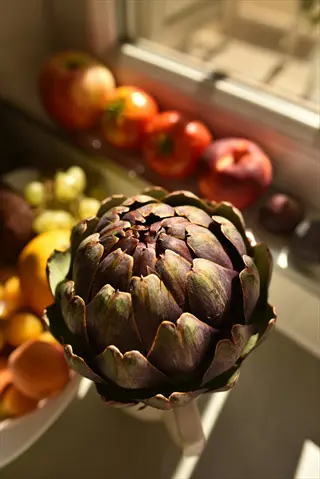
Steamed Artichokes
- Fact: Steaming whole preserves cynarin that stimulates bile production for digestion
- Tip: Cook for 25-40 minutes depending on size until leaves pull off easily
- Tip: Serve with lemon-tahini dip for liver-supporting fats and antioxidants
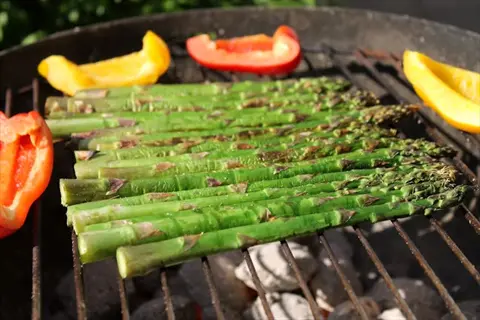
Grilled Asparagus
- Fact: Quick grilling over medium heat with olive oil prevents carcinogen formation
- Tip: Cook for 5-8 minutes, turning frequently to avoid charring
- Tip: Sprinkle with nutritional yeast instead of salt for savory flavor
Lifestyle Synergy
When you drop only 5-10% of your weight, fat in your liver can be cut by *30%*. This fat loss reduces the work of your liver. Go for slow, gradual change instead of crash dieting. Your liver will appreciate those healthy choices you have made consistently.
Engage in physical activity for 150 minutes each week such as brisk walking and riding a bicycle. Moderate exercise increases oxygen-rich blood circulation, delivering epinephrine to the liver, which helps filter toxins. Regular movement helps lower inflammation levels, contributing to optimal liver health and regeneration.
Make 7-8 hours of nightly sleep your top priority so that detox hormones can be regulated. Your liver does important repair work while you are in deep sleep. Consistent sleep patterns help maintain balanced cortisol levels, which in turn prevent additional fat from accumulating in your liver cells.
Long-term stress increases cortisol levels, which can lead to fat storage in the liver. Perform daily mindful or breathing exercises. Stress management is a complementary approach to your dietary choices. It can create a synergistic effect for your liver health and overall well-being.
Weight Management
- Losing 5-10% of body weight reduces liver fat accumulation by 30%
- Focus on gradual loss of 1-2 pounds per week through calorie control
- Measure waist circumference monthly (men <40in/102cm, women <35in/88cm)
Physical Activity
- Aim for 150 minutes of moderate exercise weekly like brisk walking or cycling
- Include both cardio and resistance training for metabolic benefits
- Break sedentary time with 5-minute movement breaks every hour
Sleep Quality
- Target 7-8 hours nightly to regulate cortisol and repair hormones
- Maintain consistent sleep schedule even on weekends
- Create dark, cool bedroom environment (60-67°F/15-19°C)
Stress Reduction
- Practice daily mindfulness for 10 minutes to lower inflammation
- Chronic stress elevates cortisol which promotes liver fat storage
- Incorporate breathing exercises before meals for better digestion
Hydration Balance
- Imperial: Divide body weight (lb) by 2 = daily ounces (150lb → 75oz)
- Metric: Multiply body weight (kg) by 0.033 = daily liters (68kg → 2.25L)
- Include electrolyte-rich fluids during activity and monitor urine color
Foods to Limit
Sugary beverages burden your liver, requiring it to transform excess sugar into fat. Limit added sugars to below 25g daily (equivalent to one soda). Substitute sodas with infused waters or herbal teas that hydrate without taxing your kidneys.
Processed meats contain harmful compounds and high sodium which leads to fluid retention. This puts added pressure on your liver. Instead, choose fresh grilled chicken or seasoned tofu. Reduce processed meats to small amounts taken occasionally for better liver function.
Cooking food at high temperatures to fry it produces harmful trans fats. Allow no more than 2g of trans fatty acids per serving. Use baked sweet potatoes rather than fries. Choose whole grains over refined carbohydrates to prevent increased insulin levels and fat storage.
For the liver, the safest choice is no alcohol. Alcohol is converted into poisonous substances that damage liver cells. To protect your liver, opt for alcohol-free mocktails crafted with fresh, natural ingredients. Remember, the liver is obliged to metabolize alcohol first, which delays some of its vital detoxifying work when alcohol is consumed.
Sugary Drinks
- Why limit: One 12oz soda has 39g sugar - exceeds daily 25g limit, causing fat buildup
- Liver impact: Forces liver to convert excess sugar into stored fat
- Alternative: Infused water with lemon/cucumber or unsweetened herbal tea
Processed Meats
- Why limit: Bacon/sausages contain nitrites that form harmful N-nitroso compounds
- Liver impact: High sodium causes fluid retention, increasing liver pressure
- Alternative: Fresh grilled chicken or baked tofu with herbs/spices
Fried Foods
- Why limit: French fries/chips cooked in reheated oils develop trans fats
- Liver impact: Trans fats promote scar tissue formation (fibrosis)
- Alternative: Oven-baked sweet potato fries with olive oil spray
Refined Carbs
- Why limit: White bread/pasta lack fiber, spiking blood sugar rapidly
- Liver impact: Constant insulin surges promote fatty liver development
- Alternative: Whole grain bread or spiralized vegetable noodles
Alcohol
- Why limit: Liver processes 90% of alcohol into toxic acetaldehyde
- Liver impact: Causes fat accumulation and inflammation even in small amounts
- Alternative: Alcohol-free mocktails with fresh berries and herbs
The Power of a Balanced Diet
Picture your plate with 50% non-starchy vegetables, which might include spinach or broccoli. The second 25% should consist of lean protein, such as chicken or tofu roughly the size of a deck of cards, and the final quarter consists of whole grains, such as quinoa or brown rice.
Vegetable nutrients also improve mineral utilization. Vitamin C in peppers helps your body absorb iron from proteins. Together, they aid liver function. Nutrient teamwork helps raw foods become more useful than isolated supplements to eliminate toxins and promote cell regeneration.
Measure servings carefully. One serving equals 1 cup of raw vegetables. Protein servings equal 3-4 ounces. Always serve meals with 8-12 oz water to aid digestion and to help flush toxins. Adequate hydration enhances the liver's natural filtration processes.
A balanced plate helps minimize the workload on your liver by ensuring a consistent flow of nutrients. This method prevents blood sugar spikes while still delivering antioxidants. Be sure to pair this with a consistent level of hydration to complete your liver-support system throughout the day.
Non-Starchy Vegetables
- Examples: Broccoli, spinach, bell peppers (at least 5 servings daily)
- Liver Benefit: Provide antioxidants like glutathione that support detoxification
- Tip: Fill half your plate with colorful varieties for maximum nutrient diversity
Lean Proteins
- Examples: Salmon, chicken breast, tofu (3-4oz per serving)
- Liver Benefit: Supply amino acids needed for liver cell repair and enzyme production
- Tip: Bake or grill instead of frying to avoid adding unhealthy fats
Whole Grains
- Examples: Oats, quinoa, brown rice (¼ cup dry = 1 serving)
- Liver Benefit: Beta-glucan fiber reduces inflammation and improves insulin sensitivity
- Tip: Choose minimally processed options with ≥3g fiber per serving
Healthy Fats
- Examples: Avocado, olive oil, nuts (1-2 tbsp oil or ¼ cup nuts daily)
- Liver Benefit: Monounsaturated fats reduce fat accumulation in liver cells
- Tip: Use extra-virgin olive oil for dressings and low-heat cooking
Hydration
- Examples: Water, herbal tea, infused waters (8-10 glasses daily)
- Liver Benefit: Flushes toxins and supports optimal blood volume for liver filtration
- Tip: Include 8-12oz fluids with each meal to enhance digestion
Top 5 Liver-Supporting Foods
Caffeine improves liver detoxification and lowers the risk of scarring. The antioxidants chlorogenic acid and cafestol protect liver cells. The recommendation is to drink 3 to 4 cups of filtered coffee a day, rather than boiled coffee. Avoid sugar and use cinnamon to maximize benefits while being easy on the liver.
Fatty Fish such as salmon will give you omega-3s to lower liver fat by 20%. Take 2 servings of 3-4 oz, per week. Baked or steamed are best. Never fried. EPA and DHA will help fight inflammation, allowing your liver to regenerate tissue more effectively.
Berries contain the anthocyanins, which lower liver fibrosis, and should be eaten 1 cup per day, raw or with light cooking. Blueberries and strawberries offer polyphenols, which protect against cell damage. They work best when the berries are not broken down during the cooking process.
Cruciferous vegetables, such as broccoli, stimulate detoxification pathways. Chop one cup a day and steam it lightly to retain sulforaphane, a chemical that enhances detoxifying enzymes up to 40%. Do not steam for more than five to six minutes, since overcooking destroys the glucosinolates, which protect the liver.
Garlic has a compound called allicin that helps increase glutathione levels. To benefit, you'll want to crush 2-3 raw or lightly sautéed cloves per day. The sulfur compounds in garlic lower fat storage and boost natural detoxification. Always prepare garlic fresh to retain the bioactive compounds.
Coffee
- Key Benefit: Lowers risk of cirrhosis by 44% with 3-4 cups daily
- Active Compounds: Antioxidants like chlorogenic acid and cafestol
- Preparation: Choose filtered over boiled to reduce diterpenes
- Tip: Avoid adding sugar; use cinnamon instead for flavor
Fatty Fish
- Key Benefit: Omega-3s reduce liver triglycerides by 20%
- Active Compounds: EPA and DHA fatty acids combat inflammation
- Preparation: Bake or steam; avoid frying to preserve nutrients
- Tip: Consume 2 servings weekly (e.g., salmon, mackerel)
Berries
- Key Benefit: Anthocyanins reduce liver fibrosis in studies
- Active Compounds: Polyphenols protect against oxidative stress
- Preparation: Eat raw or lightly cooked; avoid prolonged heating
- Tip: 1 cup whole berries daily (blueberries, cranberries)
Cruciferous Vegetables
- Key Benefit: Sulforaphane boosts detox enzymes by 40%
- Active Compounds: Glucosinolates activate liver cleansing
- Preparation: Lightly steam or sauté; avoid overcooking
- Tip: Include 1 cup chopped daily (broccoli, Brussels sprouts)
Olive Oil
- Key Benefit: Monounsaturated fats reduce fat accumulation
- Active Compounds: Oleocanthal has anti-inflammatory effects
- Preparation: Use raw or for low-heat cooking (<375°F/190°C)
- Tip: 1-2 tbsp daily extra-virgin oil
Garlic
- Key Benefit: Allicin activates detox pathways and reduces fat
- Active Compounds: Sulfur compounds stimulate glutathione production
- Preparation: Crush raw or lightly sauté to preserve allicin
- Tip: Consume 2-3 cloves daily for maximum benefits
5 Common Myths
Detox diets or juice cleanses are needed to clear and reset your liver.
The liver detoxifies itself - there is no need for detox diets or juice cleanses. This organ clears toxins via complex enzymatic means throughout its life and extreme detox regimens can actually rob it of essential proteins and nutrients it needs to function properly. Target regular ingestion of whole foods such as cruciferous vegetables that plug into promotion of the liver's in-built detoxifying apparatus.
Alcohol intake is the sole significant cause of liver damage in adults
Although excess intake of alcohol is injurious, nonalcoholic fatty liver disease, resulting from excessive sugar intake, processed foods, and sedentary habits, affects more than 25% of adults in industrialized nations. Viral hepatitis, certain drugs, genetic diseases, and obesity also lead to significant liver damage. Reduction of added sugars and normal weight maintenance are equally important as moderate alcohol intake for liver protection.
Herbal remedies and nutritional supplements may be used instead of dietary improvements
It is impossiblefor supplements to provide the same food synergy of the nutrients they provide that affect the cells in particular and provide the necessary inflammatory molecules for liver health. Supplements are also largely unproven and may have contaminants and have serious effects, More improvement to liver health comes from the dietary use of scientifically-proved food substances, such as coffee, berries and fatty fish, which provide complex nutrient matrices which serve to decrease inflammation and also provide molecules for cellular repair mechanisms for the liver tissue throughout.
Symptoms of liver damage are noticeable in its early reversible stages
Liver disease is silent with no symptoms until considerable damage has occurred to the liver. The liver possesses remarkable reparative capacity and has little ability to signal pain, so that early fat accumulation or early inflammation usually leaves the liver without any alarming evidences. Regular blood tests should be made for liver enzymes, for the usual evidences of liver disease, such as jaundice, only occur when the liver is considerably diseased.
All fats should be avoided for optimal liver health
Monounsaturated and omega-3 fats actually promote liver health because they minimize inflammation and ensure fat does not accumulate. Foods such as olive oil, avocado and fatty fish provide essential fatty acids that manage fat metabolism within liver cells. The true villains are trans fats and excessive saturated fats from processed foods, not the healthy unprocessed fats from plant and fish foods that help cellular function.
Conclusion
Make one easy change today; maybe it's switching from soda to herb tea or upgrading to a vegetable serving. These easy, consistent actions build lasting change to be beneficial for your liver. The liver responds better to continuous, gentle stimulation than to drastic changes.
Bear in mind how food choices, cooking methods, and lifestyle habits combine. Steaming vegetables instead of frying preserves vitamins. Walking 30 minutes daily improves circulation. This great synergy provides your liver with the complete support it needs to thrive.
There is no need for expensive cleanses and supplements. As we previously discussed, your liver cleanses itself when it is properly nourished. Focus on the whole foods such as the top five liver lovers we discussed that contain everything your liver needs.
Daily, your liver regenerates its cells. When you support this miraculous renewal with good choices, opt for berries instead of candy, olive oil instead of butter, and water instead of soda. These daily choices give you a strong liver, which serves you throughout your life.
External Sources
Frequently Asked Questions
Which foods provide the best liver support?
The top liver support foods include fatty fish like salmon, cruciferous vegetables such as broccoli, antioxidant-rich berries, garlic for detox activation, and coffee. These foods provide essential compounds that reduce inflammation and enhance natural detoxification processes.
What drinks help flush the liver naturally?
Effective liver-supporting drinks include:
- Coffee: Contains antioxidants that protect against scarring
- Herbal teas: Dandelion or milk thistle aid toxin removal
- Lemon water: Vitamin C boosts glutathione production
- Infused water: Cucumber/mint combats inflammation
Which cooking methods preserve liver nutrients best?
Steaming and baking are optimal for preserving liver-supportive nutrients. These methods maintain antioxidants in vegetables and prevent harmful compound formation, unlike frying which creates inflammatory trans fats that damage liver cells over time.
What are the worst foods for liver health?
Highly damaging foods include:
- Sugary drinks: Cause rapid fat accumulation
- Fried foods: Contain inflammatory trans fats
- Processed meats: Promote oxidative stress
- Refined carbs: Spike insulin and fat storage
Can supplements replace liver-supportive foods?
Supplements cannot replicate the nutrient synergy of whole foods. Many lack scientific backing and may contain contaminants, whereas foods like berries and fatty fish provide complex nutrient matrices that work together for optimal liver repair.
How does olive oil benefit the liver?
Olive oil provides monounsaturated fats that reduce fat accumulation in liver cells. Its active compound oleocanthal fights inflammation, while healthy fats regulate metabolism - use extra-virgin varieties raw or for low-heat cooking.
What lifestyle habits support liver repair?
Key habits include:
- Moderate exercise: 150+ minutes weekly reduces inflammation
- Hydration: Flushes toxins efficiently
- Sleep: 7-8 hours regulates repair hormones
- Stress management: Lowers cortisol-induced fat production
Are detox cleanses necessary for liver health?
No, the liver naturally detoxifies itself. Extreme cleanses deprive it of essential nutrients, while consistent intake of whole foods like cruciferous vegetables supports its built-in detox systems without risky interventions.
What signs indicate improving liver health?
Positive indicators include stabilized energy levels, reduced abdominal bloating, clearer skin complexion, and normalized digestion. Blood tests showing improved enzyme levels provide the most accurate confirmation of healing progress.
How does garlic support liver function?
Garlic contains allicin that activates detox pathways and sulfur compounds that boost glutathione production. These elements reduce fat accumulation and enhance the liver's natural cleansing mechanisms - consume raw or lightly cooked.

